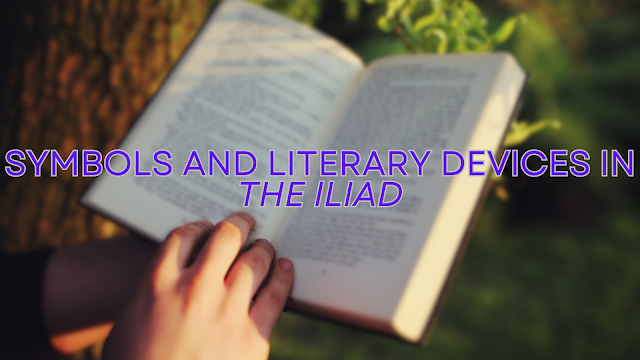Symbols and Literary Devices in Homer's The Iliad
🧾 Introduction
Homer's Iliad is a rich tapestry of symbols, themes, and literary devices that convey honor, fate, rage, and human struggle. It is more than just a story about war. Homer creates a timeless epic of meaning and emotion by transforming historical conflict through potent imagery and poetic devices. The major literary devices and symbols from The Iliad are listed below, along with an explanation of their meaning in the epic.
⚔️ Major Symbols in The Iliad
1. Achilles' armor as a representation of heroic glory and identity
The armor that Achilles wears symbolizes his position as the greatest warrior. After Hector kills Patroclus, it becomes a symbol of honor that has been stolen; when Achilles recovers it, it signifies his return to combat and retribution.
2. The Shield of Achilles as symbol of Civilization and Fate
The elaborately detailed shield (Book 18) depicts both life and death, conflict and peace. In contrast to the limited scope of war, it symbolizes the full range of human experience and emphasizes Homer's more expansive moral outlook.
3. Fire as a representation of rage and devastation
Achilles' anger is frequently compared to fire, as demonstrated by his burning of Trojan fields and his setting of Patroclus' pyre on fire. It stands for destructive emotions as well as the unbridled power of war.4. Gods as representations of destiny and divine intervention
In The Iliad, Greek gods represent forces like pride, justice, and fate that are beyond human control. The idea that mortal actions are influenced by divine will and the unpredictable nature of life are symbolized by their constant meddling.✍️ Literary Devices in The Iliad
1. Epic Simile (Homeric Simile): extended comparisons using “like” or “as”
These lengthy, striking similes (e.g., warriors to lions, battles to storms) compare heroic moments to ordinary life. They ground the action in well-known human experience while simultaneously elevating it.Example:
“Achilles fell upon the Trojans like a storm of fire.”
– evokes both violence and divine power.
2. Epithets: Frequently used descriptive expressions
Characters are frequently characterized by clichés such as "rosy-fingered Dawn" or "swift-footed Achilles." These serve as cognitive devices, strengthening identity and supporting oral tradition.3. Foreshadowing: Hints at upcoming occasions
Patroclus' death is hinted at by his choice to put on Achilles' armor. In addition to creating tension, this device illustrates how fate is inevitable.4. Irony: When results fall short of expectations
Even though Hector hopes to survive, readers are aware that he will die, which is a dramatic irony. Irony gives the story a tragic depth.
5. In Medias Res: Starting in the midst of a situation
The poem begins with Achilles' fury in the middle of a battle. This format engages readers and lets the backstory develop through memory and conversation.6. Invocation of the Muse: Conventional epic beginning
Homer summons the Muse to sing of Achilles' fury at the outset. By doing this, the poem is linked to a broader mythological tradition and is inspired by God.🧵 Conclusion
The Iliad is a literary masterpiece, not merely a story about warriors and gods. Homer explores profound themes of honor, fate, grief, and heroism through the use of symbols like armor and fire as well as literary devices like similes and epithets. These resources have contributed to The Iliad's centuries-long status as a classic of literature.



Comments
Post a Comment